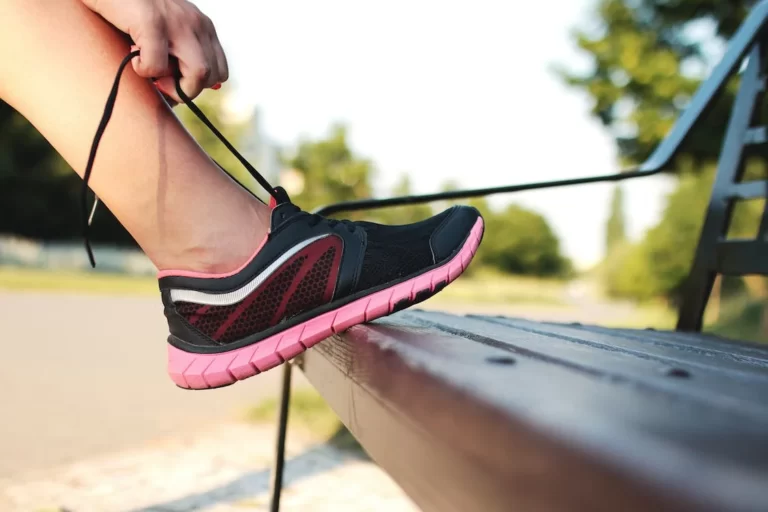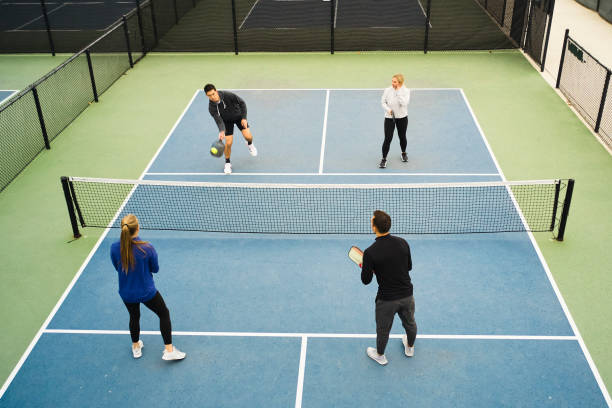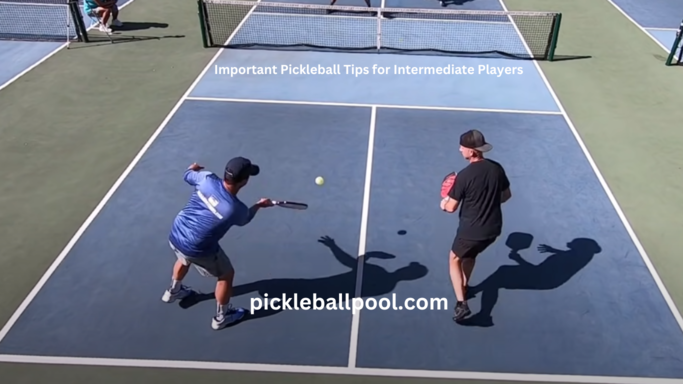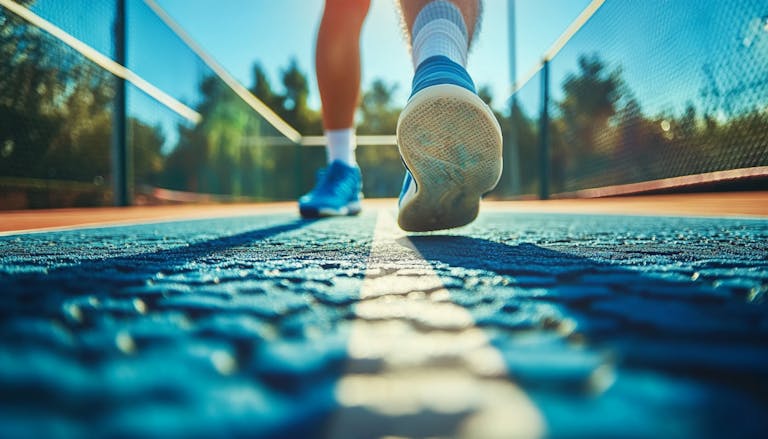10 Key Differences Between Pickleball and Tennis
It’s simple to understand why pickleball is a sport that’s becoming more and more well-liked. This quick-moving sport that anybody can learn combines aspects of table tennis, badminton, and tennis. However, how does it stack up against its parent sports? How are pickleball and tennis similar? Let’s examine the 10 most significant distinctions between pickleball and tennis.
The size of the equipment used in pickleball and tennis is one significant distinction. Pickleball uses lighter balls, shorter racquets, and smaller courts than traditional tennis. Compared to regular doubles matches, the net is also lower. In fact, one of what makes pickleball unique is the height of the net. In addition, instead of 21 or 15, like in regular tennis matches, games are typically played to 11 points. everything from the size and shape of the court to the tools that are employed. This essay will examine 10 key distinctions between pickleball and tennis. Regardless of your level of experience with either sport or your level of interest in it. It’s critical to comprehend what distinguishes them from one another.
Court Size: Larger vs Smaller
Court size is a crucial aspect of any sport, including pickleball and tennis. Pickleball courts are smaller than tennis courts. However, the precise dimensions vary based on the game type. A primary pickleball court measures twenty feet by forty-four feet for competitive play, while a regular tennis court is 78 feet by 36 feet.
The size disparity among tennis and pickleball courts frequently leads to some significant variances in play styles in each sport. Pickleball games, for example, have a smaller court size than tennis matches. Players have less room to move around and chase down shots. This means that power strokes are less effective in pickleball. In tennis, they are readily blocked or returned off the court’s short edges.
Net Height: Higher vs Lower
Pickleball and tennis are two racquet sports that have been around for a long time. There is an ongoing disagreement between the two, mainly around the height of the net. In this post, we will compare the benefits of a higher and lower net in pickleball and tennis.
A regulation pickleball court has a net height of 36 inches in the center and 34 inches in the middle third of each side. This is significantly shorter than the height of a conventional tennis court, which is 42-44 inches in the center and 39-41 inches on either side. A lower net can make it easier for players to return balls because opponents have less time to react to close-range strokes.
Serving Technique: The Difference between Pickleball and Tennis
Pickleball and tennis serve in very different ways. Tennis players must perform an overhead serve, which involves sending the ball high into the air and striking it with force. Typically, the service is delivered diagonally across the net into the opponent’s service box. The serve in pickleball is an underhand move in which the player strikes the ball below the waist and diagonally into the opposite court. Pickleball’s unique serving method provides for greater control and precision.
Equipment: Different Racquets & Balls
Pickleball and tennis are two of the most popular racquet sports, attracting both serious athletes and recreational amateurs. Both give hours of active enjoyment and are a terrific way to stay fit for many people. Understanding the fundamental distinctions between the two games might assist you in determining which is ideal for you.
Playing pickleball necessitates the use of a different racquet than that used for tennis. Pickleball paddles are smaller than tennis racquets and usually do not have strings attached. The ball used in pickleball is likewise unique. It’s much lighter than a tennis ball, and it’s got holes in it to reduce air resistance and slow it down during play. A tennis ball, on the other hand, is denser than its counterpart and is meant to go faster when struck with sufficient force from a tennis racquet.
Scoring System: The Difference between Pickleball and Tennis
Pickleball is a rapidly expanding sport that is gaining popularity among athletes due to its complexity and competitive potential. But, in terms of scoring, how does it compare to tennis? To better grasp this, consider the main distinctions in the scoring systems of the two sports.
Pickleball, unlike tennis, has a simpler scoring system. Pickleball points are scored by counting up from 0 and utilizing only odd numbers. The first team to reach 11 points wins the game, and only one point must be earned over the opponent’s total to win. When playing tennis, players use game points or set points; each set is worth six games, and an individual or doubles team must win four sets in order to win their match.
Rally Lengths: Shorter vs Longer
When comparing pickleball with tennis, rally lengths are an important factor to consider. Both sports include two opponents hitting a ball back and forth. The length of rallies is greatly influenced by variances in court size, equipment, and scoring. Pickleball rallies are often shorter than tennis rallies, but they still provide plenty of excitement and strategy.
Because of the smaller court size in pickleball, shots must be played faster than in tennis. Due to the little space provided, players are compelled to return the ball more swiftly. Furthermore, pickleball paddles are larger than those used for tennis. Players can make contact with the ball even when it is further away from their body, allowing them to return it with greater accuracy and speed.
Footwork: Lighter Movement vs Intense
Footwork is a vital ability that is required for both pickleball and tennis success. Although all games necessitate quick, light movements on the court, there are significant differences in the way they are played. From milder movement to intense sprints, we look at the contrasts between pickleball and tennis footwork.
Pickleball players walk around the court more slowly because the ball moves considerably slower than it does in tennis. As a result, players do not need to hurry from one side of the court to the other as frequently as they would when playing tennis. This allows for lighter footwork that is more concerned with precision than with speed or power. Pickleball players can spend more time thinking about where they want their shots to go instead of needing to react rapidly with their feet and body posture when returning strokes.
Popularity & Availability: Locations, Demand
Pickleball has grown in popularity dramatically over the last few years. It is currently a regular provision in many sports facilities across the world. Tennis, on the other hand, has been around for millennia. Pickleball is a newer addition to the court scene, but it doesn’t make it any less interesting or entertaining.
The supply and demand for these two sports differ significantly. While tennis courts are far more common than pickleball courts, demand for both has gradually increased. Pickleball courts are becoming more widely available as their popularity grows; yet, they might still be difficult to locate due to their scarcity in comparison to standard tennis courts.
The Double Bounce Rule
Tennis is a physically demanding sport that mainly relies on the opponent’s ability to hit the ball back into play. When the ball is served, the receiving team must allow it to bounce before returning it, and the serving team must allow it to bounce before returning it, for a total of two bounces. This rule is intended to prevent players from making direct contact with the ball with their rackets before it has bounced twice. Tennis does not have it.
The Pickleball “Kitchen”
The kitchen in pickleball is a region in the center of the court that is split by the net into 7-foot portions on the left and right. The kitchen, also known as the no-volley zone, is intended to keep close-to-the-net spikes from impacting and injuring opposing players. Players are not allowed to enter the kitchen to hit the ball until it has landed. There is no such thing as a kitchen in tennis.
Conclusion: Unique Identities
Pickleball and tennis are two popular sports that provide participants with a fun way to stay active. While the contrasts between the two sports can be obvious at times, they also have numerous parallels.
To win rallies, both pickleball and tennis require skilled execution of groundstrokes, serves, volleys, and lobs.
FAQs
Can I play pickleball with a tennis racquet?
While it is technically feasible to play pickleball with a tennis racquet, it is not encouraged. Pickleball paddles are custom-made for the sport, allowing for greater control and maneuverability.
Is pickleball appropriate for children?
Absolutely! Pickleball is a wonderful sport for children to learn and enjoy because of its smaller court size and slower ball speed. It improves coordination, agility, and social connection.
Which sport is better for beginners, tennis or pickleball?
Pickleball is sometimes regarded as a more beginner-friendly sport due to its smaller court, slower ball speed, and simpler learning curve. It enables new players to easily understand principles and enjoy rallies right away.
Can I play pickleball and tennis at the same time?
Certainly! Many athletes like competing in both sports. The abilities and strategies learned in one sport frequently complement and improve performance in another.
Are professional pickleball tournaments available, as in tennis?
While pickleball’s professional circuit is still developing, there are various tournaments and events organized throughout the world that showcase top players and provide opportunities for professional pickleball athletes to compete at a high level.







